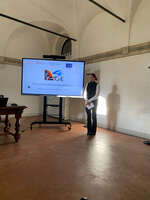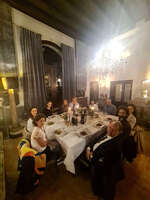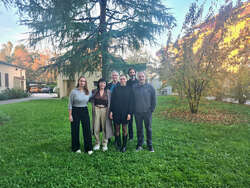
PA4AGE Final Event in Treviso
Promoting regular physical activity in the elderly is particularly important in order to improve cardiorespiratory and muscular health, reduce the risk of chronic noncommunicable diseases, depression and cognitive decline.
Although we are all aware of this, very often we find a lack of motivation that should be fostered by appealing training challenges and trained professionals in helping older people who find much difficulty due to an unfavorable health condition.
For olde adults, even those with poor mobility, physical activity is important to maintain muscle mass and good balance, thereby preventing falls. For fall prevention, most evidence supports a pattern of physical activity aimed at balance and muscle strengthening at moderate intensity at least three times a week.
Instead, these, as you know, were our motivations that drove us to the devising, writing and finally implementation of our PA4AGE project, which after three years concluded in December 2024
On Thursday 7th 2024 we had the final event of the PA4AGE project. Partners from Greece and Germany: PIKEI, FRODIZO, University of Münster and EGRAPA were hosted by ISRAA at the beautiful location of ?Sala dei Grani in Treviso (IT).
We had many special guest experts in physical activity who contributed excellent insights: Marco Bergamin from the University of Padua, Ruth Kavanagh and Anne Kavanagh, from EduFIT in Ireland and Dr. Francesca Gallè, a member of the EU COST Action-Network on evidence-based Physical Activity in old age (PhysAgeNet).
The morning of the event was devoted to the following speeches:
- How can we use technology to promote physical activity
- Social Network, gaming and physical activity
- From sedentary behavior to planned physical activity in old age
Then, we had the presentation of the project results: PR1 – Guidelines for the anlysis of the requirements and the definition of the training contents; PR2 - E-learning course development, PR3 - E-platform workshop, here we had a workshop with participants on what was the platform of PA4AGE.
In the afternoon, however, we developed interactive sessions between groups that could perform different muscle training activities, to discussions on the use of the PA4AGE app and the effectiveness of sports practice at third age.
During these discussion panels, the opportunity to think about innovative social aggregation strategies for promoting physical activity as a crucial element of healthy and active aging, we also noted a high appreciation of the project outcomes toward concrete project sustainability.
What we as a consortium hope is that we have created a viable and high-impact formative tool to better manage the promotion of physical activity both among professionals, but also among older people who have been very willing to exercise.







